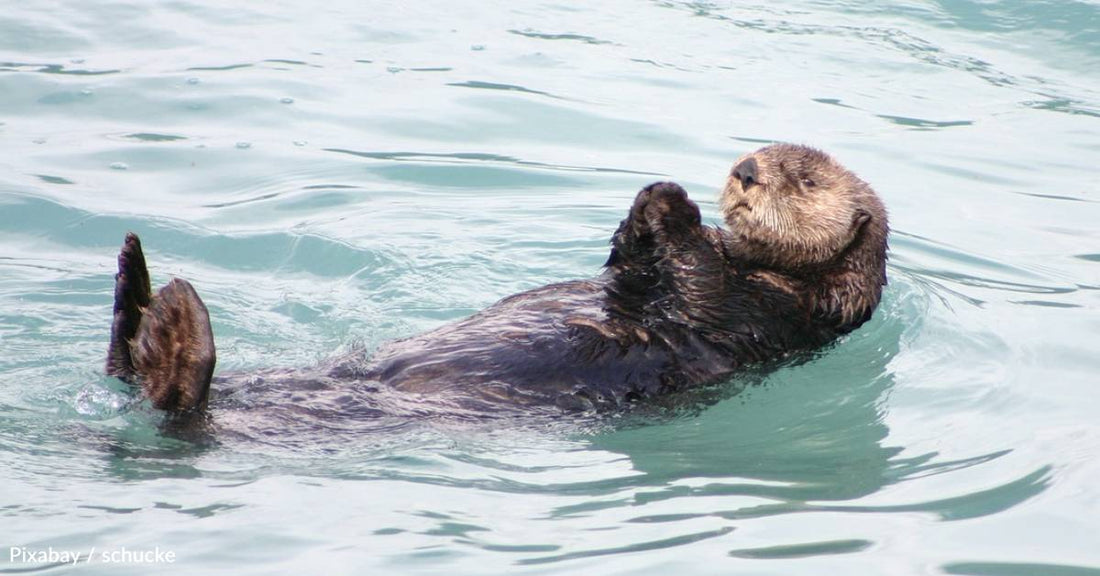Famous Surfboard-Swiping Otter Has a New Pup
Michelle Milliken
An otter that made headlines earlier this year for her dedication to surfboard swiping now has a mini-partner in crime.
The U.S. Fish and Wildlife Service (USFWS) has confirmed that sea otter 841 - who lives in the Santa Cruz, California, area – has a pup of her own. This comes after the aquatic kleptomaniac was observed with a baby otter by avid wildlife watchers. The new baby may provide a clue as to why she was so possessive of other people’s surfboards over the past few months.
Breaking news and a major announcement! I’m happy and proud to announce that 841 has given birth and has a baby with her! pic.twitter.com/eD5N29nknL
— Native Santa Cruz (@NativeSantaCruz) October 25, 2023
In a news release, the USFWS said, “While wildlife biologists suspected sea otter 841 may be pregnant earlier this year, they were unable to verify the pregnancy without capturing the sea otter to perform a full health evaluation. Hormonal surges related to pregnancy have been known to cause aggressive behavior in female southern sea otters. Because sea otter 841 has recently been observed with a pup, biologists will continue to monitor her and assess her behavior. There are currently no plans to attempt capture of sea otter 841 or her pup.”
There were attempts to capture 841 over the summer, but they were all fruitless, as she kept evading the authorities. You can see her shenanigans on a variety of Twitter posts, one of which shows her getting on a bait surfboard with nets waiting just a short distance away on a boat. Despite being tantalizingly close to catching her, she slipped through their fingers yet again.
Surfing sea otter 841 is riding the bait surfboard. pic.twitter.com/ElnSH5WYg1
— Dustin Mulvaney (@DustinMulvaney) July 15, 2023
Sea otter 841 was born at University of California, Santa Cruz, the daughter of a mother otter who also liked to bug water recreators. For her, it was kayakers, and unfortunately, this was due to people feeding her. Because 841's mother was associating people with food, she was ultimately captured by the Monterey Bay Aquarium. After being taught how to survive on her own, 841 was released in 2020 on the Monterey coast.
Now that she’s a mother herself, the USFWS says it’s important for beachgoers to give the duo lots of room to keep them safe.
An amazing video!
This video of the sea otter attacking a surfboard yesterday was shared me and is being posted with the photographers permission. The video must remain in this tweet to be shared. This is a dangerous sea otter, avoid it if at all possible! pic.twitter.com/N7qPMFVRrt— Native Santa Cruz (@NativeSantaCruz) July 10, 2023
The agency writes, “The average adult sea otter has to actively forage and eat 20 to 30 percent of its body mass in food each day just to meet its energy requirements. That's why it's incredibly important for sea otters to conserve their energy, and why they are often seen resting on their backs on the water's surface when they are not foraging—their survival, and the survival of their pups, depends on it.
“To help give sea otters and their pups the best chance at survival in the wild, it's important for members of the public to give them and their pups space, especially when recreating on the water.”
If you’d like to keep up to date on 841+1, as they’re being called, the Twitter account @NativeSantaCruz often shares photographs.
Michelle has a journalism degree and has spent more than seven years working in broadcast news. She's also been known to write some silly stuff for humor websites. When she's not writing, she's probably getting lost in nature, with a fully-stocked backpack, of course.




















